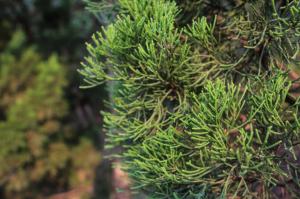Why Yellow Tomato Plant Leaves: Understanding the Causes and Solutions
Tomatoes are one of the most beloved garden plants, but they require a bit of attention to flourish. One problem many gardeners encounter is yellowing tomato leaves, which can be alarming. However, yellow leaves don't necessarily mean the end of your tomato harvest. Understanding the causes and solutions to this problem can help you keep your tomato plants healthy and productive.
Causes of Yellow Tomato Plant Leaves
Several factors can lead to yellowing tomato plant leaves. The most common reasons include:
1. Nutrient Deficiency
Tomatoes require specific nutrients to thrive. A shortage of these nutrients can cause yellowing leaves. The most common nutrient deficiency is nitrogen. Lack of nitrogen causes the leaves to turn yellow from the bottom up, while new growth at the top remains green.
2. Overwatering
Overwatering tomato plants can also cause yellow leaves. The stress from too much water can prevent the plant from absorbing nutrients properly, leading to yellowing leaves. Additionally, excessive moisture in the soil can cause root rot, which can further damage the plant.
3. Underwatering
On the other hand, not watering tomato plants enough can also cause yellow leaves. When plants don't get enough water, they can't absorb the nutrients they need to stay healthy. As a result, the lower leaves start to yellow and eventually fall off.
4. Plant Diseases
Several plant diseases can cause yellowing tomato leaves. The most common one is Fusarium wilt, a fungal disease that damages the plant's vascular system. Other diseases, such as bacterial canker or early blight, can also cause yellowing leaves. It's crucial to identify and treat these diseases as soon as possible to prevent further damage.
Solutions to Yellow Tomato Plant Leaves
The solution to yellow tomato plant leaves depends on the underlying cause. Here are a few remedies for each potential issue:
1. Nutrient Deficiency
If nutrient deficiency is the cause of yellowing leaves, try adding fertilizers to the soil. Look for fertilizers high in nitrogen, phosphorus, and potassium. Additionally, adding organic matter to the soil, like compost or manure, can help improve the nutrient content of the soil.
2. Overwatering
Limit the amount of water your tomato plants receive to prevent overwatering. Ensure proper drainage and avoid watering the leaves. You may also need to adjust the soil to improve drainage, such as by adding sand, gravel, or perlite.
3. Underwatering
Water your tomato plants regularly, but avoid overwatering. Ensure the soil remains moist, but not waterlogged. Adding a layer of mulch to the soil around the plants can also help retain moisture.
4. Plant Diseases
Identify the disease affecting your tomato plants and treat it accordingly. Some diseases may require the removal of the affected leaves or even the entire plant. Use fungicides or other treatments as recommended by your local garden center or extension office.
Final Thoughts
Yellow tomato leaves can be concerning, but they don't always mean the end of your tomato harvest. By identifying the underlying cause and taking the necessary steps to remedy it, you can keep your plants healthy and productive. Regular maintenance, including proper watering and fertilizing, can help prevent yellowing leaves and ensure your tomato plants produce a bountiful harvest.

 how many times do yo...
how many times do yo... how many planted tre...
how many planted tre... how many pine trees ...
how many pine trees ... how many pecan trees...
how many pecan trees... how many plants comp...
how many plants comp... how many plants can ...
how many plants can ... how many plants and ...
how many plants and ... how many pepper plan...
how many pepper plan...





























